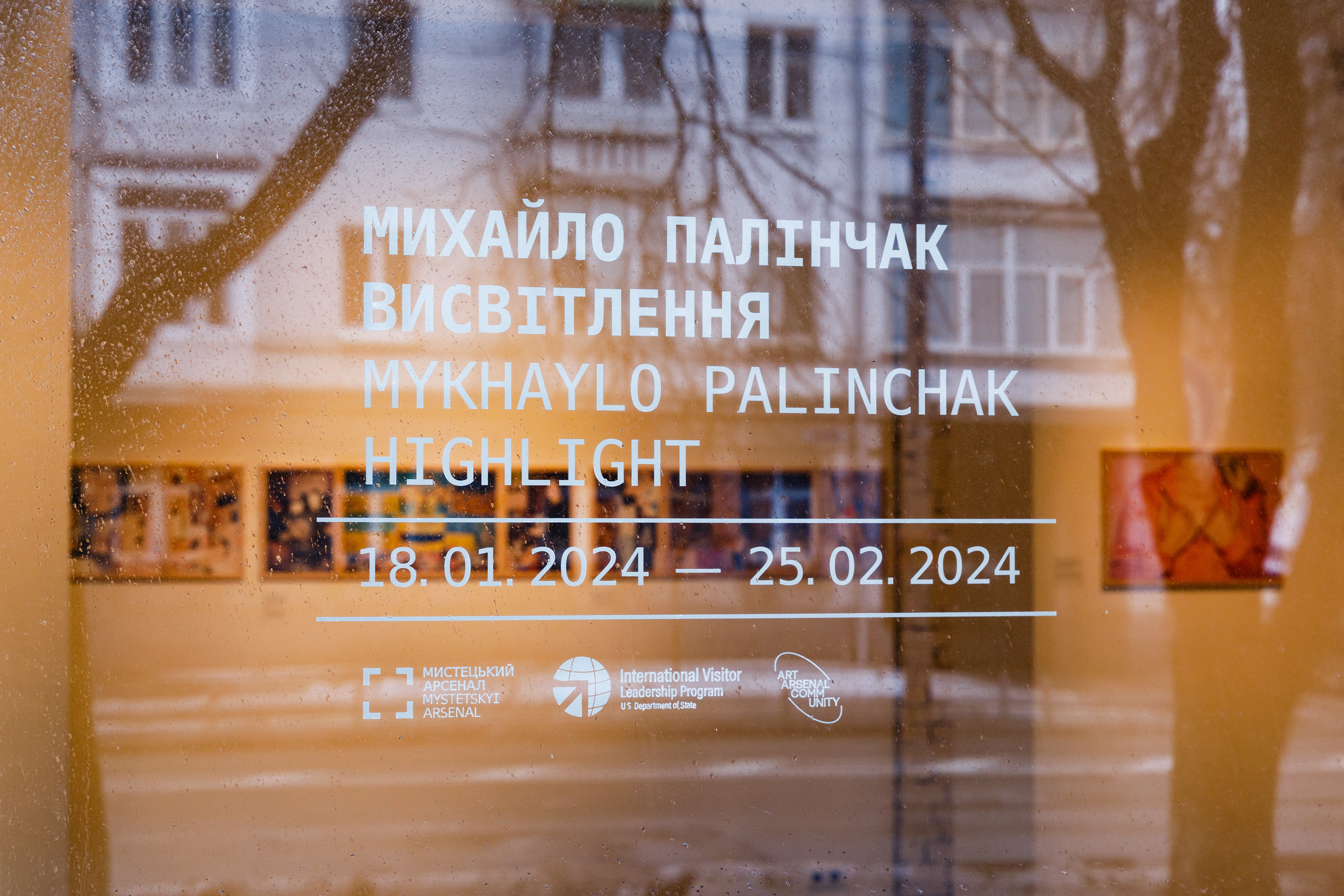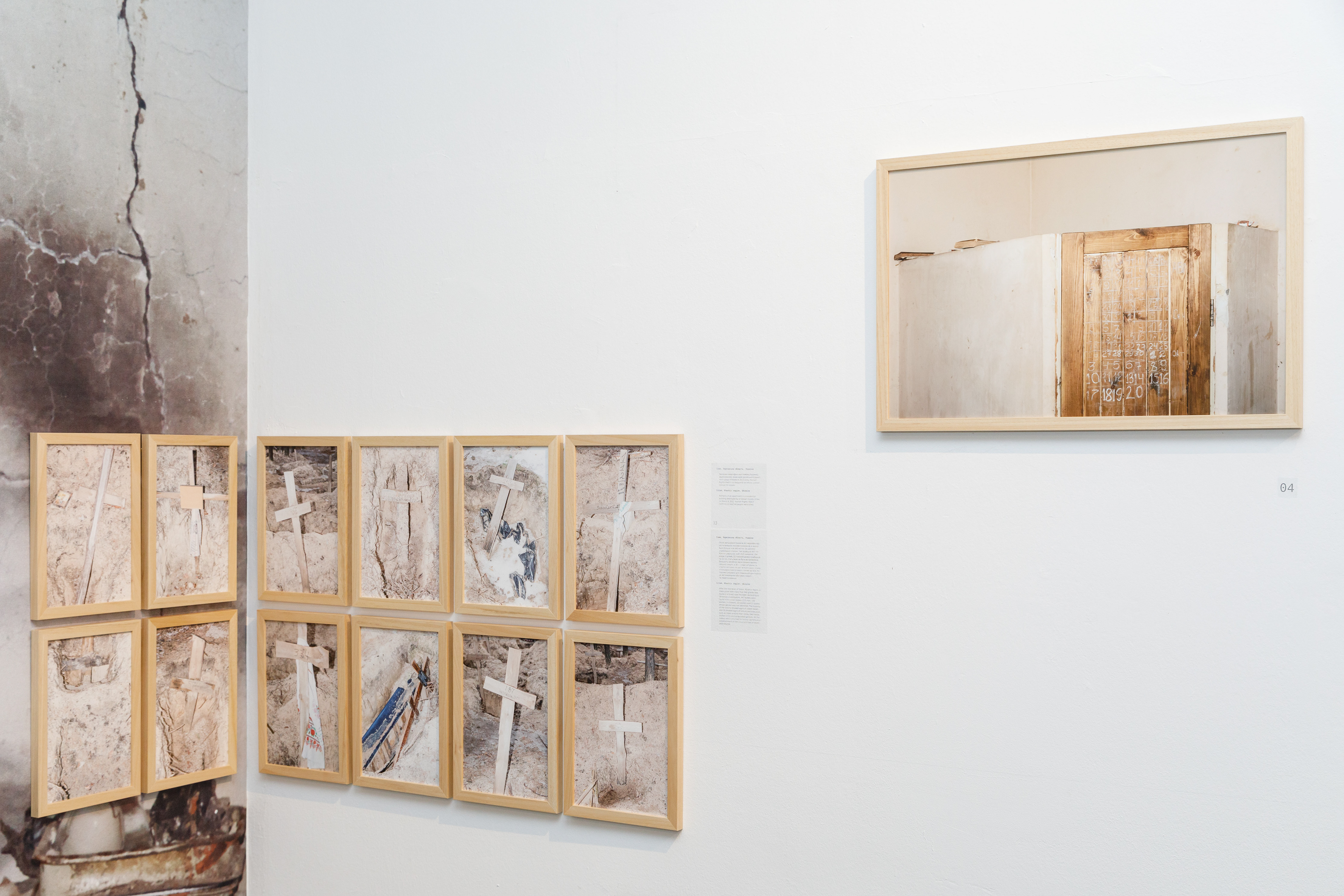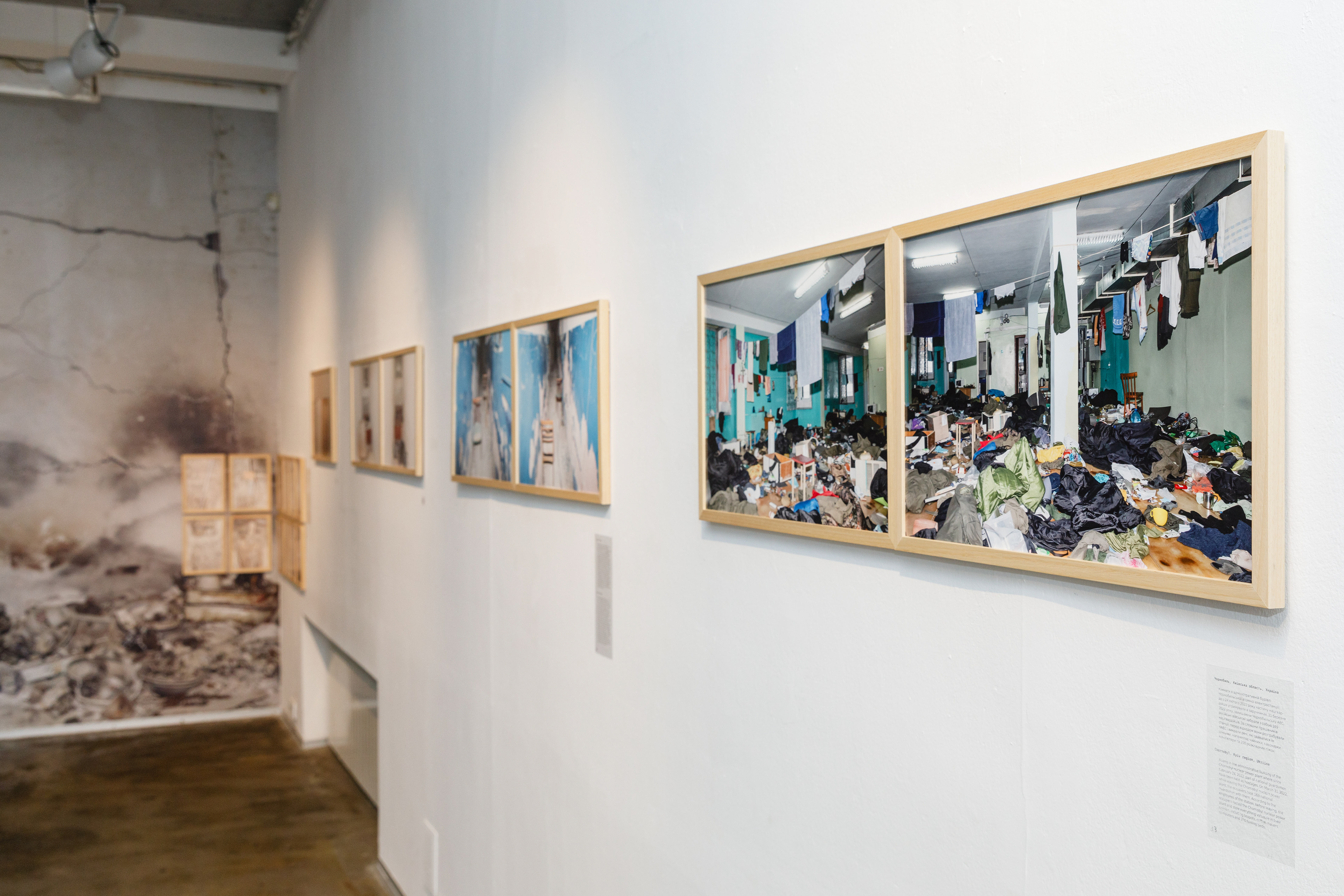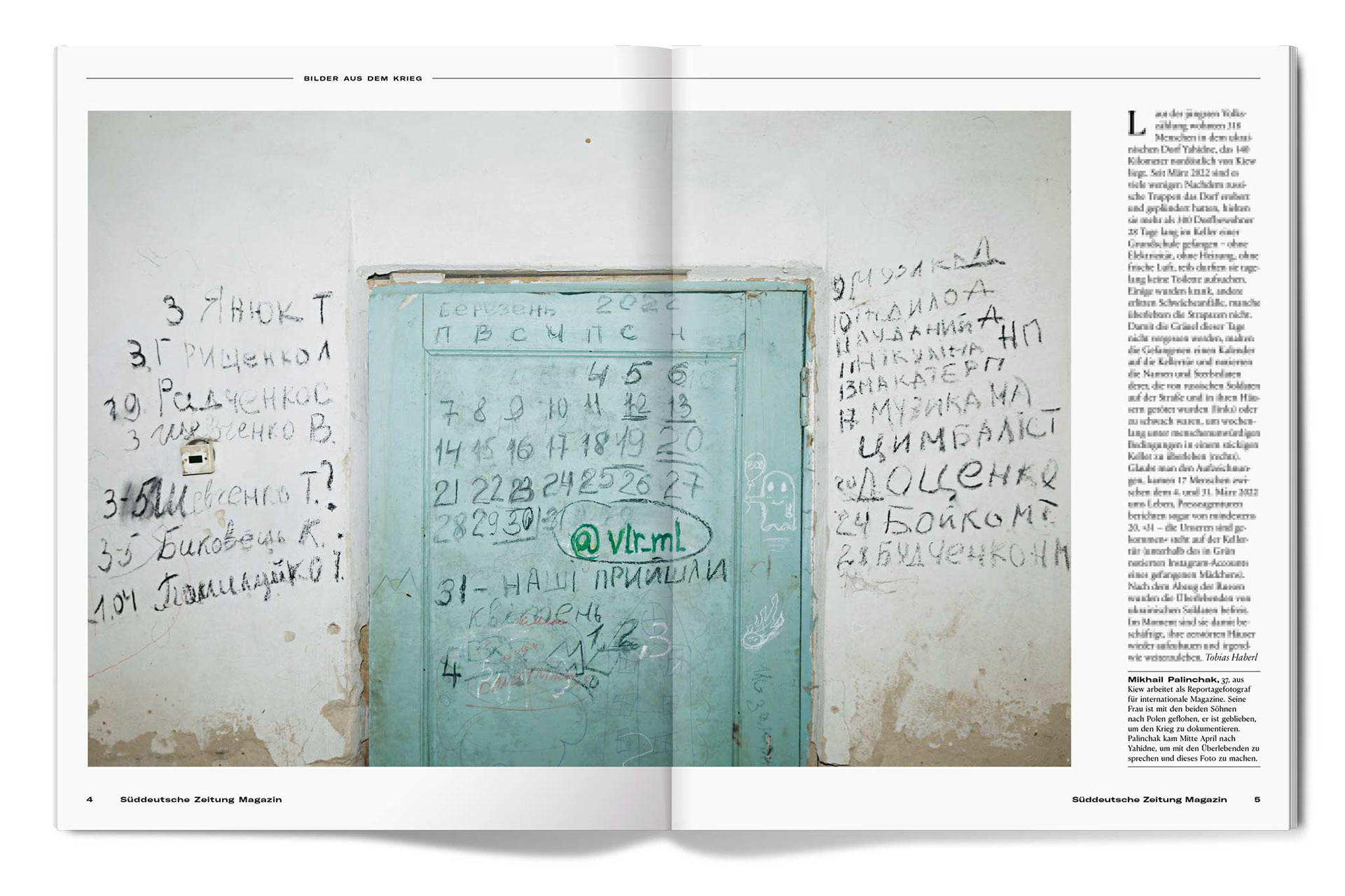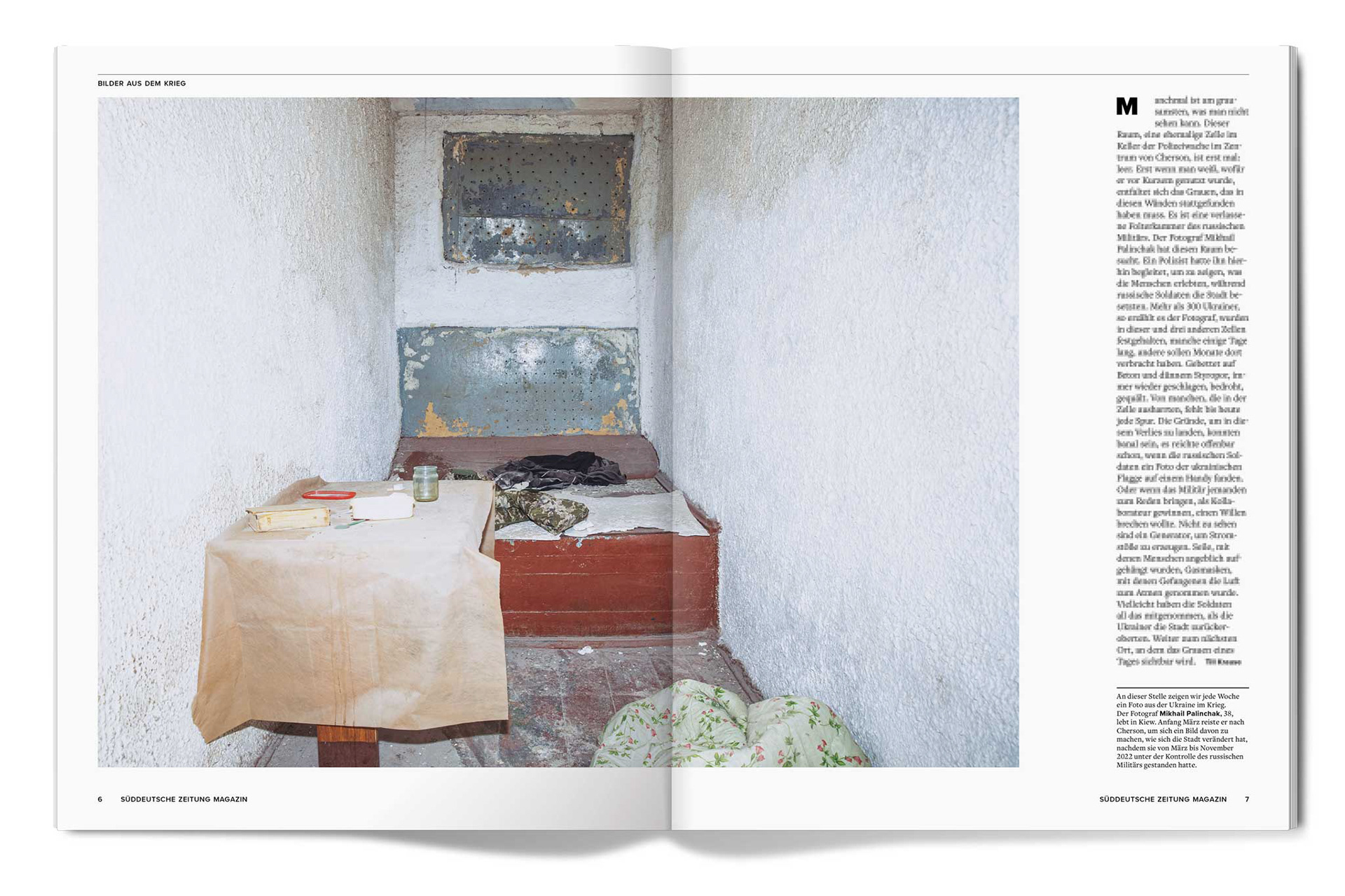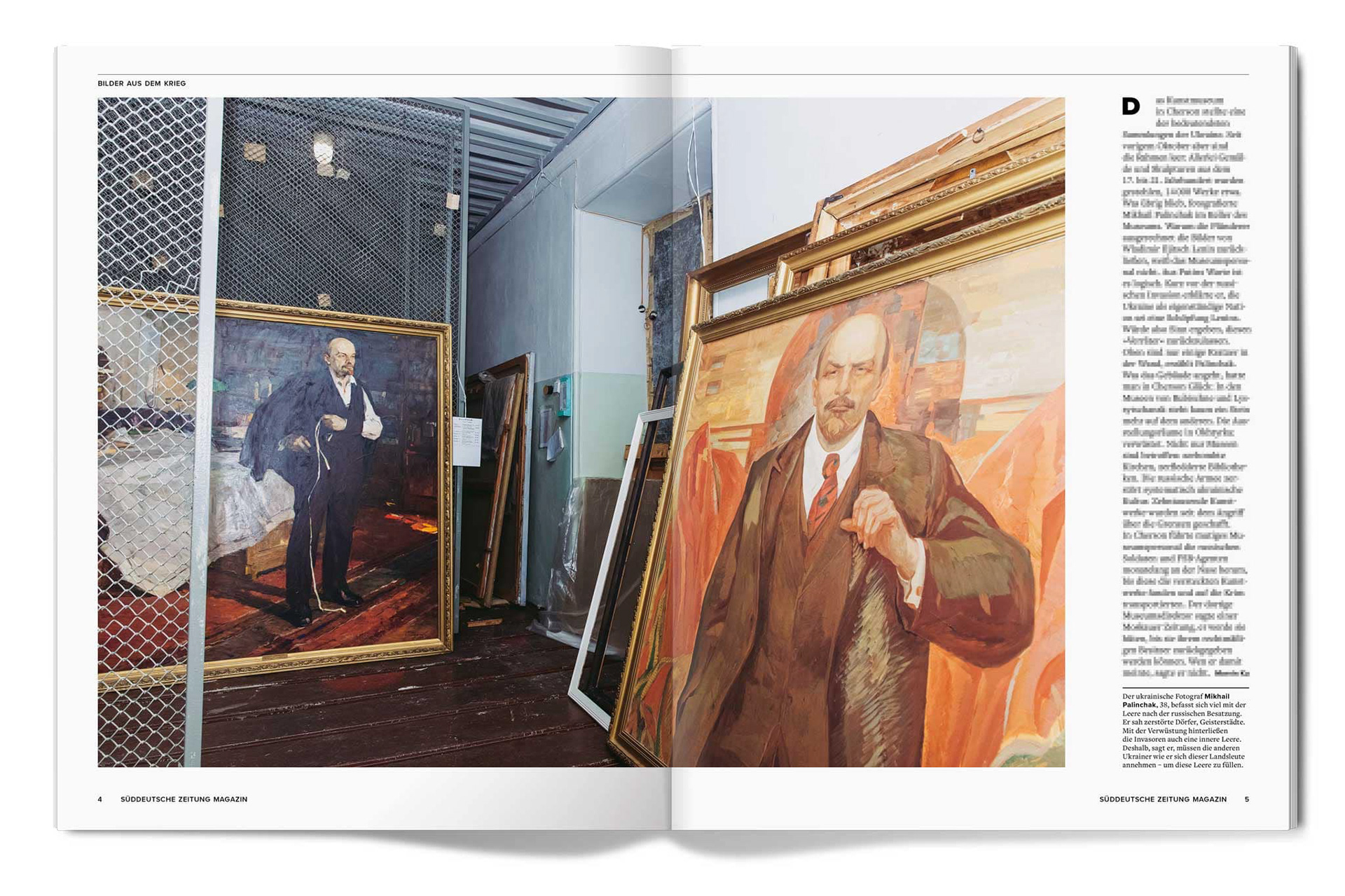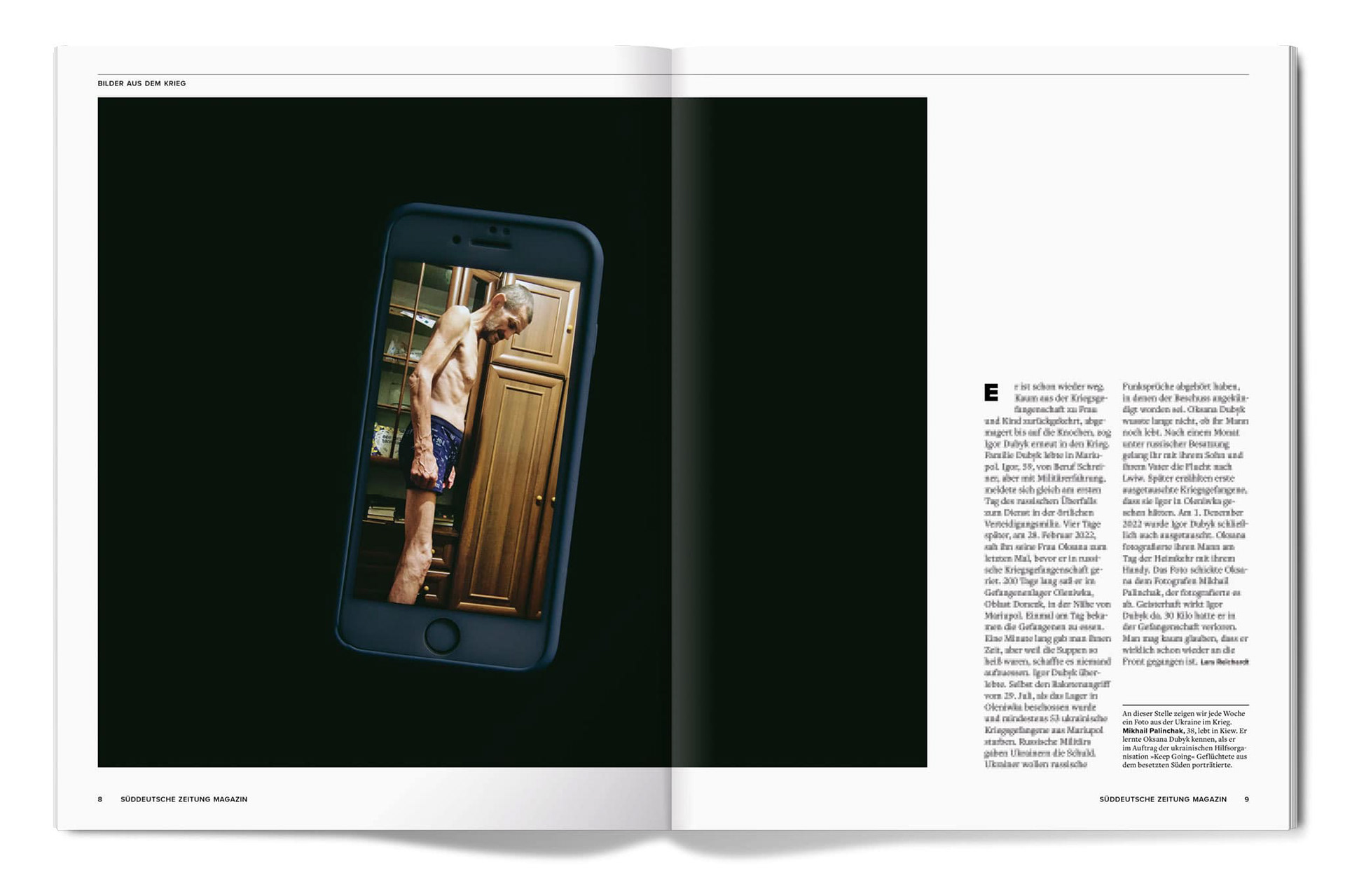Remains of the apartment in a residential building destroyed due to a Russian missile strike on March 9, 2022. Human Rights Watch confirmed the death of at least 44 people caused of that strike. Izum town, Kharkiv region, Ukraine.
Several mass graves, including one site with more than 440 graves, were found in woods near the Ukrainian city of Izum, Kharkiv region after it was liberated by Ukrainian forces in September 2022. According to Ukrainian investigators, 447 bodies were discovered: 414 bodies of civilians (215 men, 194 women, 5 children), 22 servicemen, and 11 bodies whose gender had not been determined on the date of the statement. Most of the dead showed signs of violent death and 30 presented traces of torture and summary execution, including ropes around their necks, bound hands, broken limbs and genital amputation. All bodies were exhumed for further identification, circumstances of death and reburial. Izum town, Kharkiv region, Ukraine.
Occupations diary of the Ukrainian writer Volodymyr Vakulenko-K. The diary consists of 36 pages that were written out during the first 26 days of the Russian full-scale invasion of Ukraine. Volodymyr was killed during the occupation of the Kapitolivka village, Kharkiv region, and buried without a name under the cross #319 in the Izum mass grave.
Kherson Fine Arts Museum once hosted one of the richest collections in Ukraine. At least 10,000 works out of more than 14,000 art pieces were looted by Russians when they withdraw from Kherson. From October 31 to November 3, art pieces and office equipment were loaded into trucks and taken from the museum to occupied Crimea. Historical objects were transported improperly, simply wrapped in rags. Kherson, Ukraine.
According to the official statistics, more than 300 locals went through illegal detention rooms that were discovered in Kherson after liberation. Somebody stayed there just for a couple of days, however others could spend months. Several cases are known that when leaving Kherson, the Russians took with them to the left bank of Dnipro river several people who were kept in those rooms. Beating, physical and mental torturing was an ordinary thing there. Criminologists have extracted a large amount of evidence from these premises pointing to the use of torture against people, and also collected oral testimonies from those people who passed through these rooms. A rope for hanging, gas masks for asphyxiation, a dynamo machine for generating electricity are just couple of them to mention. A person could be arrested and placed in such a cell for any action that, for some reason, did not please the Russian military. For a picture of the Ukrainian flag on the phone, for a pro-Ukrainian position, or something else in the same vein. Often, captivity and torture were used as a method to induce a person to collaborate. Kherson, Ukraine.
Basement of a primary school in the Yahidne village which was occupied by Russian troops. 28 days more than 300 residents of the village spend in this basement without electricity, heating, fresh air and any normal conditions. People fainted without oxygen and even died. These deaths were recorded on the walls near the door. From the left side of the door they wrote those name who were killed by Russians and on the right side name of those who died in the basement. On the same door they kept a calendar of their imprisonment, where it is written "31 - ours have come". Yahidne village, Chernihiv region, Ukraine, April.
Rooms in the administrative building of the Chernobyl nuclear power plant where since February 24, 2022, part of national guardsmen have been held as hostages. On March 31, 2022, while leaving the Chernobyl nuclear power plant, the occupiers took 169 national guardsmen with them. According to the employees of the station, before leaving, the occupiers looted the Chernobyl nuclear power plant and stole everything valuable in their opinion, including teapots, coffee makers, computers and 200 folding beds, Chernobyl, Ukraine.
The remains of a body are lies among the ashes of a burnt-out civilian car on the E40 highway. According to the National Police, after Russian troops retreated from the Kyiv region at the end of March 2022, more than 40 dead civilians were found inside or next to vehicles on the 'Zhytomyr' E40 highway.
The site of the execution of 8 people by the Russian militaries in Bucha, Ukraine
